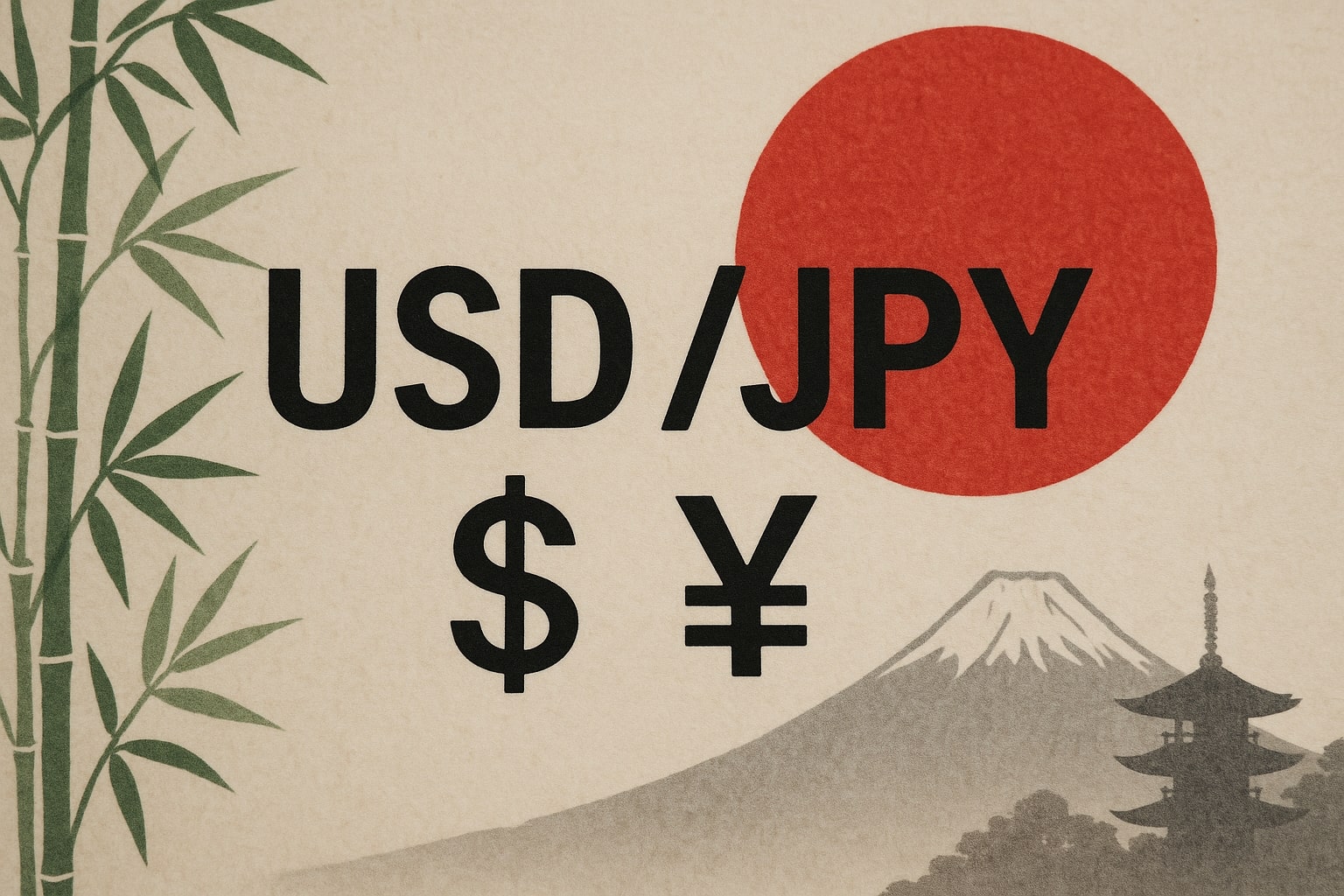
USD/JPY Struggles as US Fiscal Crisis Intensifies – Will the Yen Strengthen Further?
As concerns over US fiscal policy and debt deepen, how will these impact the USD/JPY price in the coming weeks? | That's TradingNEWS
USD/JPY Price Outlook Amid US Fiscal Concerns and Global Economic Dynamics
The USD/JPY currency pair has recently seen significant fluctuations, touching 143.50 as the US Dollar (USD) attempts to recover from early losses, primarily driven by concerns surrounding the US fiscal situation. Despite this, the yen has shown resilience, supported by the ongoing concerns over US fiscal deficits and the general economic uncertainty in the United States. With the USD/JPY price recently trading at 143.50, traders are paying close attention to key economic data and geopolitical developments that could dictate the near-term direction of the pair.
US Fiscal Concerns Weighing on USD/JPY
The US Dollar continues to struggle against the Japanese Yen, especially with the growing US fiscal deficit and President Donald Trump’s tax cut bill. This bill, recently advanced through the House of Representatives, is expected to add a significant $3.8 trillion to the national debt over the next decade, exacerbating concerns about the US's fiscal health. As the US Dollar weakens, the yen has been gaining ground, with the USD/JPY price dipping to 143.14 after a session-high of 144.40, reflecting a 0.35% decline on the day. This decline came after concerns about the US's fiscal position, including a failed 20-year Treasury auction that revealed weak demand, further putting pressure on the US Dollar.
The market is also reacting to Moody’s recent decision to downgrade the US government’s credit rating, an event that has added to the uncertainty surrounding US assets. These fiscal issues are likely to keep the USD under pressure, which could lead to further gains for the yen. This is especially relevant given the USD/JPY pair's tendency to be sensitive to shifts in the US fiscal landscape.
Bank of Japan’s Policy Outlook and Its Impact on USD/JPY
On the other side, the Bank of Japan (BOJ) has also been active in its policy actions, with Deputy Governor Shinichi Uchida hinting at a possible rate hike if the economy recovers from the negative impact of US tariffs. The odds of a BOJ rate hike in June have increased slightly, from 25% to 30%, based on recent economic developments. However, Uchida has cautioned that the outlook remains uncertain, particularly as Japan navigates the challenges posed by global economic pressures and the US-China trade tensions. This has had a bullish effect on the yen, with the currency benefiting from the expectation of a potential rate hike in the near future.
Traders are now closely monitoring upcoming Japanese data on inflation, unemployment, and wages, which could provide further clues on the BOJ’s next move. If inflation continues to remain near the BOJ’s 2% target, the yen could see additional support, further pressuring USD/JPY.
Geopolitical Tensions and the Safe-Haven Appeal of the Yen
In addition to the economic factors at play, ongoing geopolitical tensions are further bolstering the yen’s appeal as a safe-haven asset. Tensions between the US and China, as well as the possibility of escalating conflict in the Middle East, have led investors to flock to the Japanese yen, which is traditionally viewed as a safe haven in times of global uncertainty. Reports of potential strikes on Iranian nuclear facilities have further heightened geopolitical concerns, which has lent additional support to the yen.
This geopolitical backdrop has contributed to the strength of the yen, which has strengthened by 0.6% against the US Dollar, marking the seventh consecutive day of gains—the longest such streak since April 2021. As safe-haven demand continues to rise, the USD/JPY pair could face further downward pressure, particularly if tensions in the Middle East escalate further.
Technical Outlook for USD/JPY
Technically, the USD/JPY currency pair has shown signs of indecision, with the 14-day Relative Strength Index (RSI) oscillating between 40.00 and 60.00, indicating a range-bound market. The pair recently broke below the 20-day Exponential Moving Average (EMA), currently around 144.85, signaling a bearish short-term outlook. However, the pair is holding above key support levels, with the May 7 low of 142.42 and the 2023 low at 137.25 acting as critical points to watch.
A further decline in USD/JPY could see it approach these support levels, with 142.42 offering the first line of defense. On the upside, a recovery beyond the May 13 high of 148.57 could target the psychological level of 150.00, though this would require a significant shift in market sentiment. The recent upward move in the US Dollar Index (DXY), which climbed back to near 99.85 from a two-week low of 99.35, provides some support for the USD in the short term, but the broader trend still points to a weaker USD amid ongoing fiscal and geopolitical concerns.
US Economic Data and Fed Policy Outlook
Investors are also awaiting key US economic data, including the flash PMI for May, which could provide further direction for the USD/JPY pair. Weak data could lead to increased expectations of a Federal Reserve rate cut, further weakening the USD. Conversely, stronger-than-expected data could bolster the dollar and potentially reverse the recent trend in USD/JPY.
Given that the Fed has indicated a cautious stance on further rate hikes and is monitoring global economic developments, the market is betting on lower interest rates later this year. These dovish expectations are further weighing on the USD, which in turn is benefitting the yen.
Conclusion: Bearish Outlook for USD/JPY in the Short-Term
The USD/JPY pair faces several headwinds, including growing concerns over the US fiscal deficit, weak demand for US assets, and ongoing geopolitical tensions. While the dollar has attempted to claw back some of its losses, the overall trend remains bearish as the yen benefits from its safe-haven status and expectations of a possible rate hike by the BOJ. The pair’s current trading range around 143.50 suggests that it may continue to consolidate in the short term, with the downside risks remaining prominent.
That's TradingNEWS
Read More
-
IVE ETF Near $212: Is This S&P 500 Value Play Still Cheap for 2026?
20.12.2025 · TradingNEWS ArchiveStocks
-
XRP ETFs XRPI at $11.07 and XRPR at $15.76 Power $1.2B Inflows as XRP Fights for $2
20.12.2025 · TradingNEWS ArchiveCrypto
-
Natural Gas Price Forecast: NG=F Tests $3.60 Support as LNG Boom and $5 Henry Hub Calls Build Into 2026
20.12.2025 · TradingNEWS ArchiveCommodities
-
USD/JPY Price Forecast - Pairs Surges After BoJ’s 0.75% Hike as Pair Eyes 161.50 Resistance
20.12.2025 · TradingNEWS ArchiveForex



















